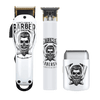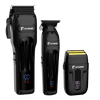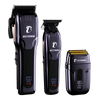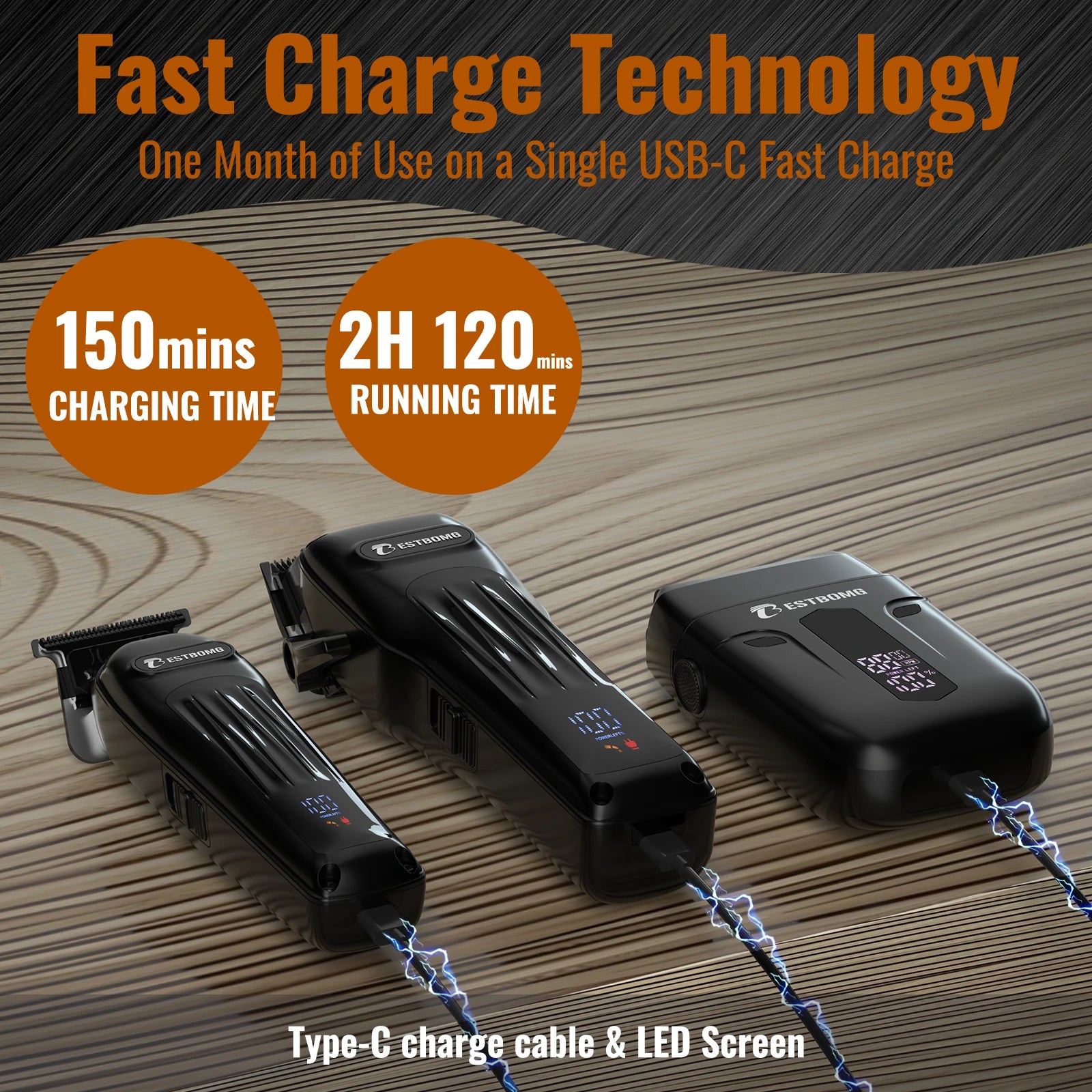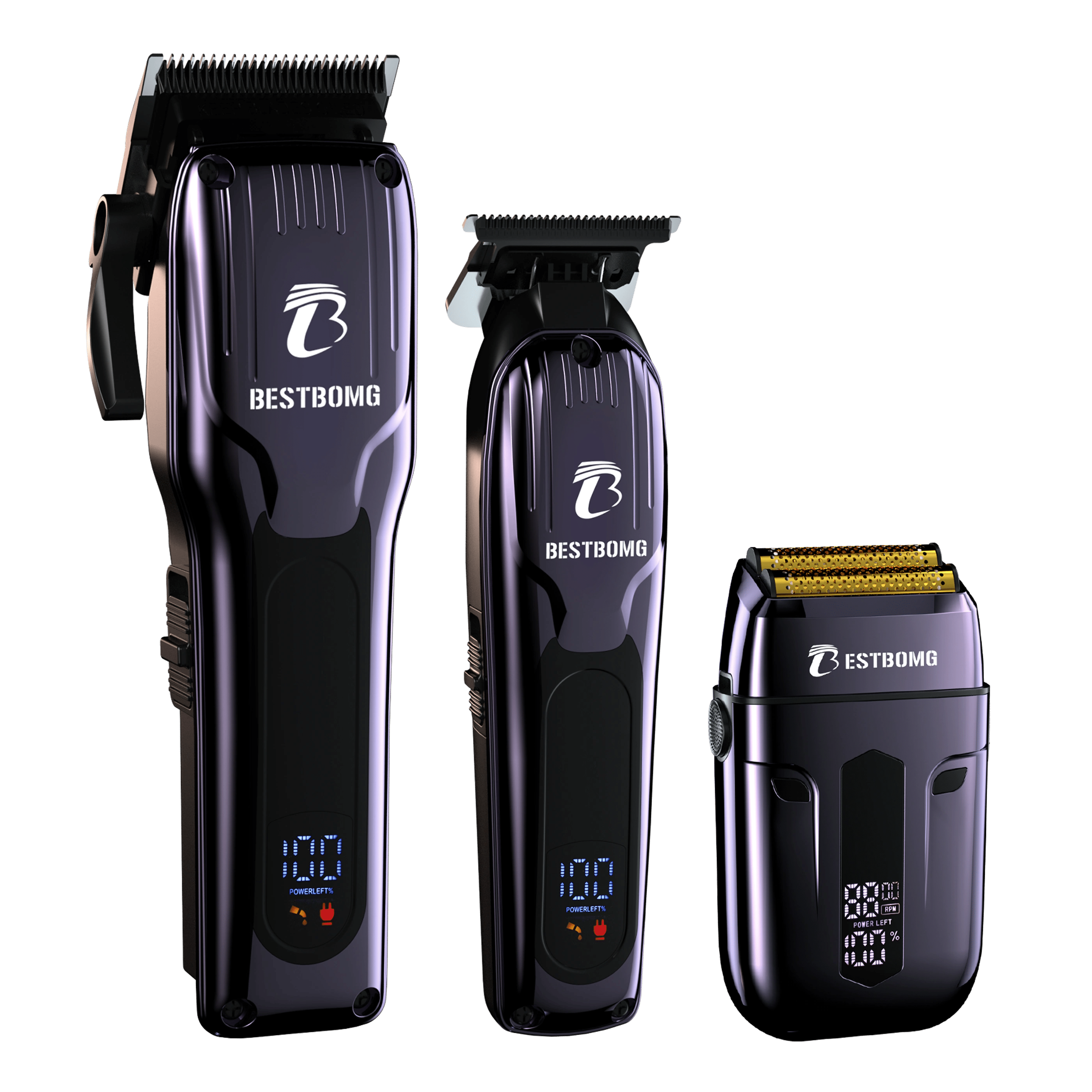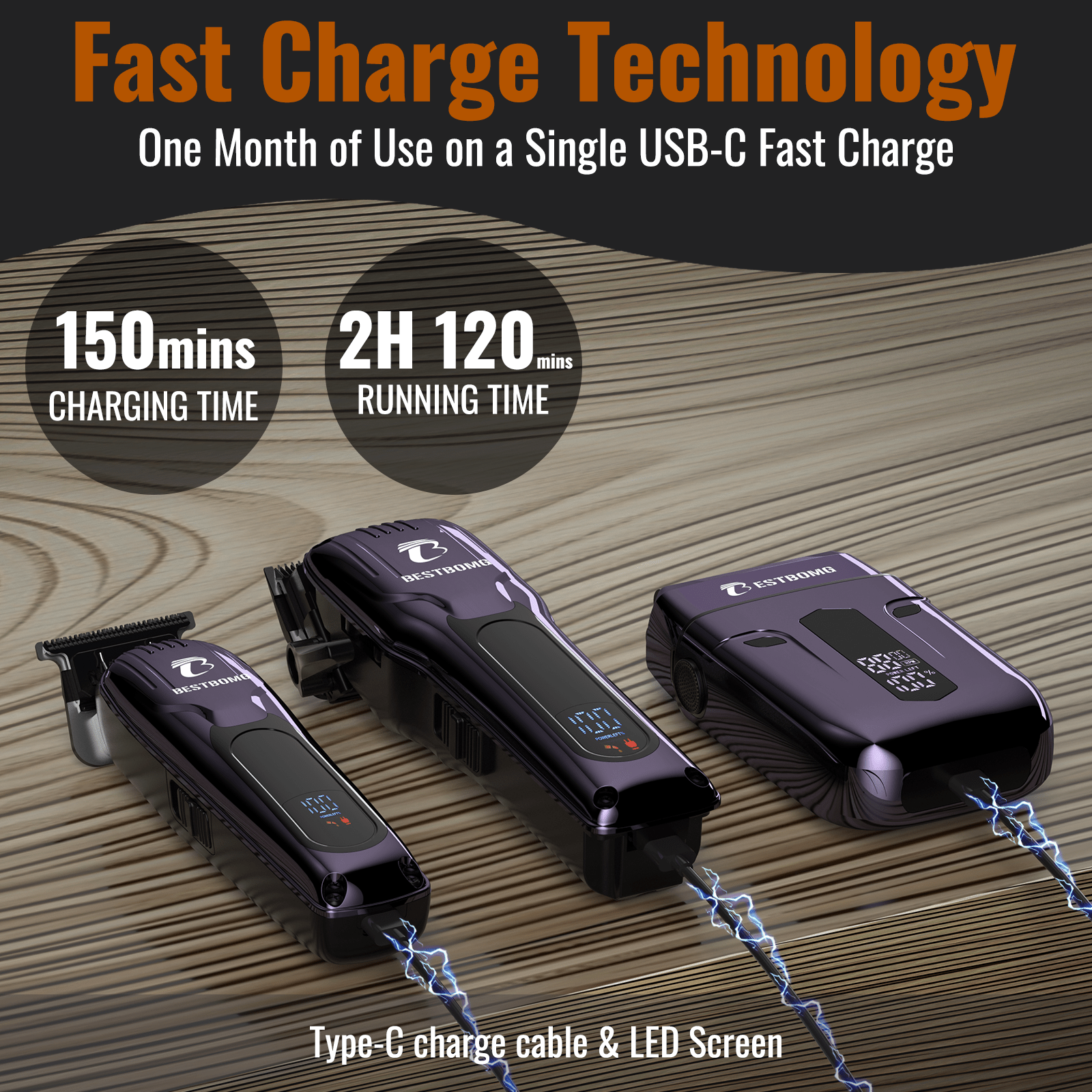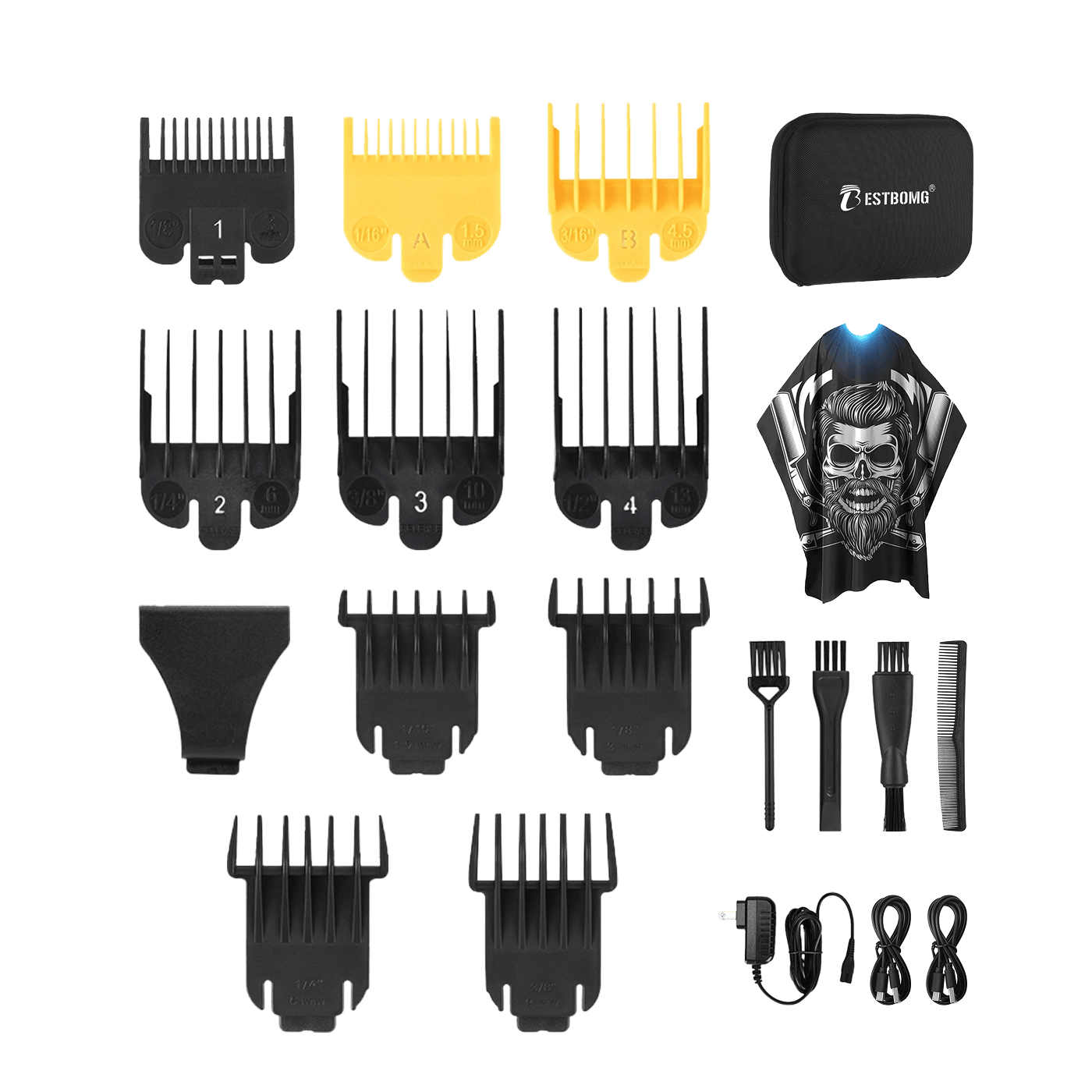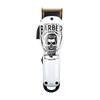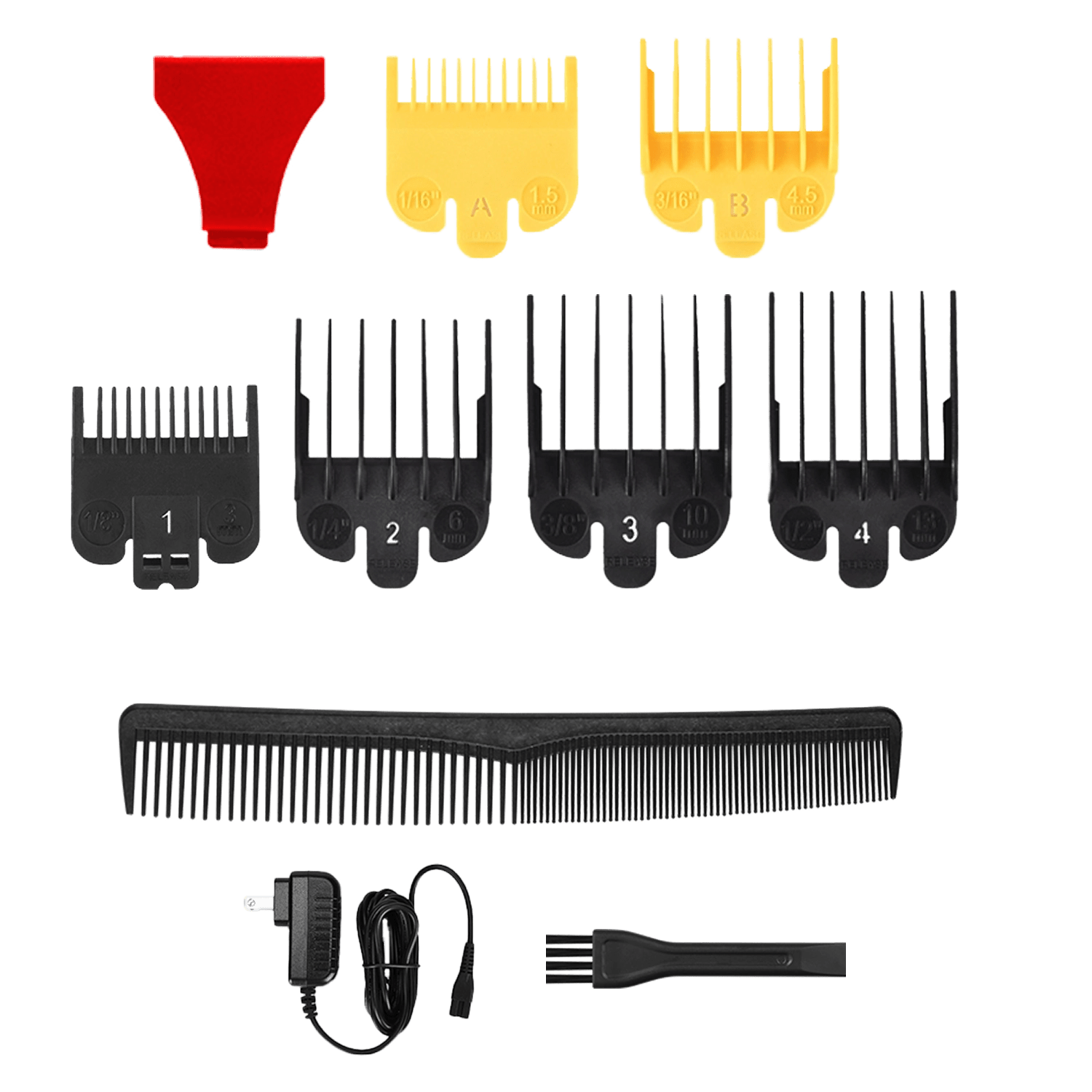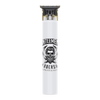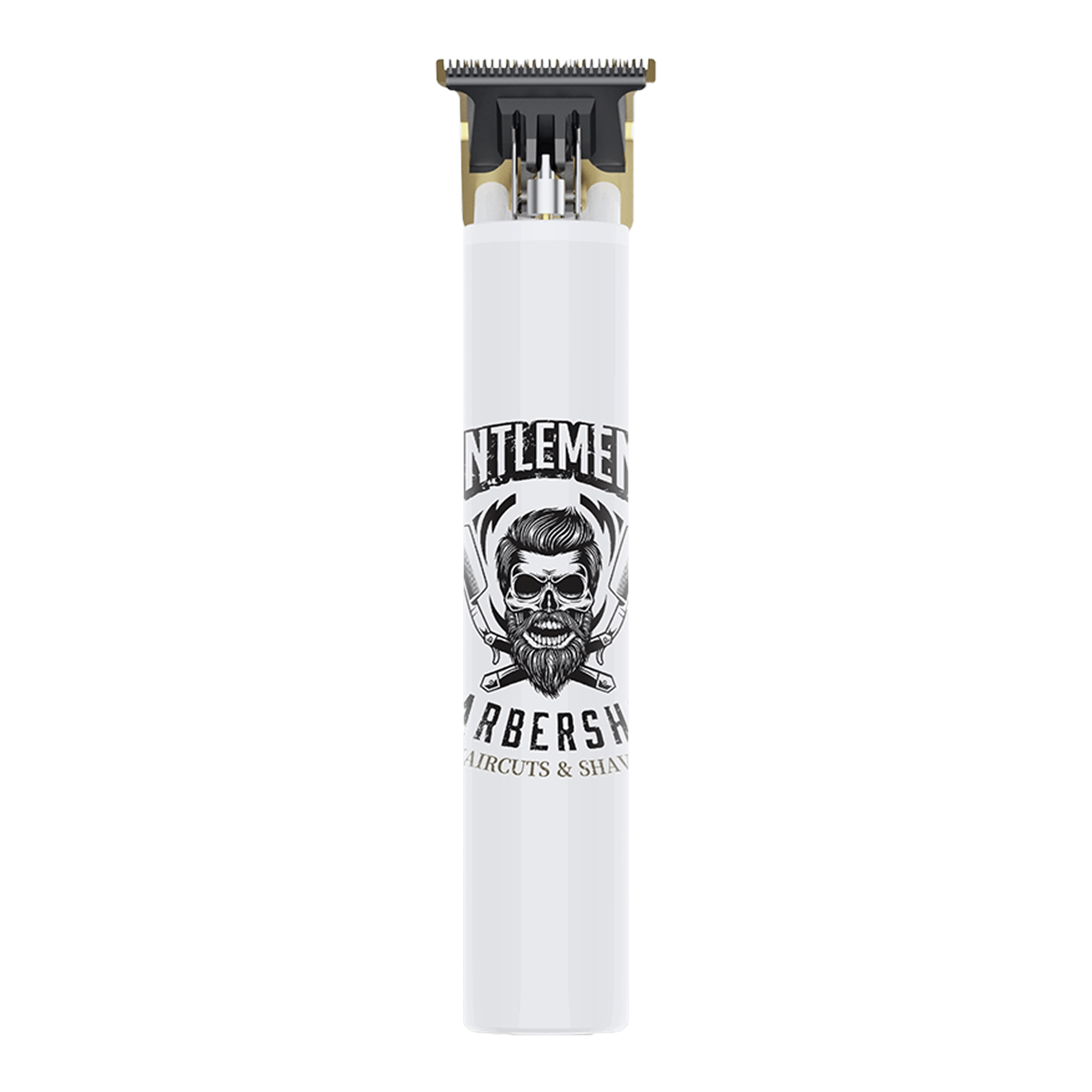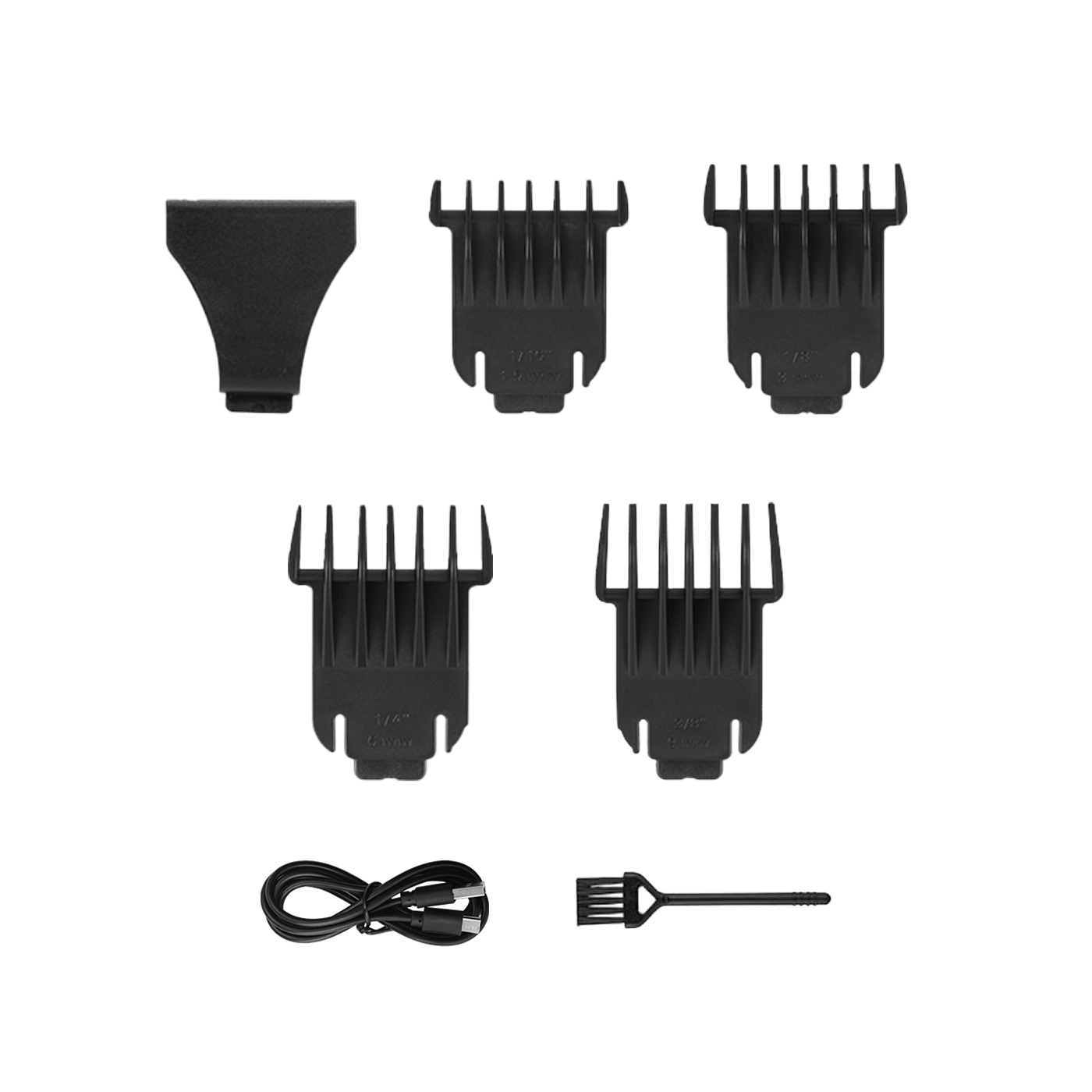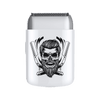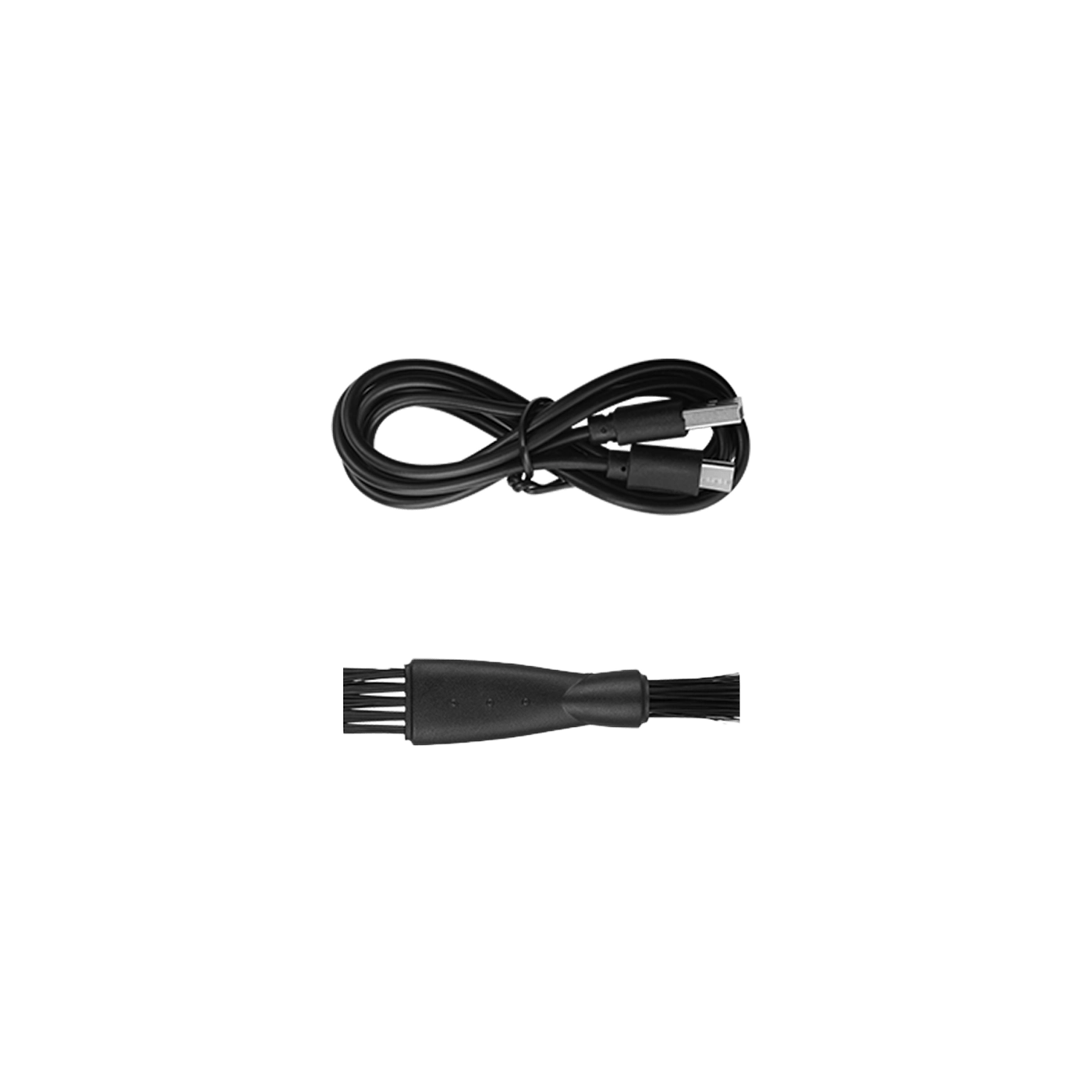Trimming a beard may seem straightforward, but doing it correctly can dramatically improve your overall look. Whether you are shaping a short beard, managing a long beard, or maintaining a beard while growing it out, the right techniques and tools are key.
In this guide, we’ll cover how to trim a beard, including tips for the neckline, maintaining length, and keeping your beard neat and stylish. Along the way, we’ll highlight the best tools, like T9 Beard Trimmer and professional hair cutting kits to make grooming simple.
Why Beard Trimming Matters
Trimming your beard is not just about looks. It helps:
- Keep your beard clean
- Prevent split ends
- Reduce itch and dryness
- Make your face look more shaped
- Help your beard grow evenly
A good trim can give you a fresh and confident style every day.
When Is the Best Time to Trim a Beard?
Choosing the right time makes trimming easier.
After a shower → hair is soft
When beard is dry → length is more accurate
In good lighting → helps keep both sides even
How Often Should You Trim?
Your trimming schedule depends on your style:
|
Beard Style |
Trim Frequency |
|
Short Beard |
Every 1–2 weeks |
|
Medium Beard |
Every 2–3 weeks |
|
Long Beard |
Every 3–4 weeks |
|
Growing Beard |
Small touch-ups only |
How to Choose the Right Beard Length
Picking the correct length makes grooming easier.
- Short beards → use a short guard (1–3 mm)
- Medium beards → use a mid guard (4–12 mm)
- Long beards → trim with scissors first
-
Patchy beards → shape edges to look fuller
Tip: Start longer → go shorter slowly
You can always trim more, but you can’t put hair back!
Simple Beard Shapes to Choose From
Before trimming, decide the shape you want:
|
Style |
Best For |
Look |
|
Straight Shape |
Thick cheeks |
Strong jaw style |
|
Rounded Shape |
Long beards |
Soft and full look |
|
V Shape |
Narrow chin |
Makes jaw look longer |
|
Box Shape |
Square faces |
Clean and sharp |
Understanding Your Beard Type
Before trimming, you should understand your beard type. Beards vary in thickness, growth pattern, and texture, which influences how you should trim them.
- Thin Beards: May need careful shaping to avoid patchiness. Use shorter guard lengths to define edges.
- Thick Beards: Can tolerate longer trims but require frequent maintenance to prevent bulkiness.
- Curly Beards: Benefit from scissors or trimmers with precise guards to maintain control and avoid unevenness.
Knowing your beard type helps in selecting the right trimmer and guard lengths, ensuring your trimming is consistent and flattering.
Essential Tools for Trimming

Trimming requires the right tools. High-quality equipment makes a significant difference in the ease and results of your grooming routine. Key tools include:
- Beard Trimmer: Ideal for precise trimming and shaping. The T9 Beard Trimmer offers multiple guard lengths for versatile styling.
- Scissors: Useful for long or uneven hairs, particularly in curly or coarse beards.
- Clippers: Necessary if you want to reduce bulk quickly, especially with longer beards. BS-808A Hair Clippers Kit is perfect for this purpose.
- Comb: Helps align hairs evenly before trimming.
Investing in quality tools ensures a cleaner trim and minimizes the risk of accidental over-cutting.
How to Trim a Beard Neckline
The neckline is crucial for a clean, professional look. Incorrect neckline trimming can make a beard appear sloppy.
- Identify the natural line: The beard line should sit just above your Adam’s apple.
- Use a trimmer: With no guard, define the lower edge of the beard by trimming excess hair below this line.
- Blend if necessary: If your beard is long, blend the neckline into the chin area using a guard length slightly longer than zero.
For a visual reference, you can check Philips’ guidelines on trimming necklines for a professional approach. Regularly maintaining your neckline ensures your beard looks well-kept and sharp.
How to Trim a Long Beard

Long beards require patience and careful trimming to maintain shape and prevent split ends.
- Comb thoroughly: Remove tangles before trimming.
- Trim gradually: Use a longer guard first, then gradually move shorter if needed.
- Shape carefully: Focus on the overall outline rather than reducing bulk all at once.
For long-beard maintenance, the T9 Beard Trimmer provides adjustable lengths, allowing you to preserve the desired beard volume while eliminating stray hairs. Scissors can complement trimming for detail work.
How to Properly Trim a Beard
Proper trimming ensures your beard looks symmetrical and intentional rather than patchy or uneven.
- Start clean and dry: Wash your beard and pat dry.
- Choose the correct guard length: Start longer to avoid cutting too much hair.
- Trim with care: Move the trimmer with the natural hair growth direction.
- Check symmetry: Compare both sides frequently.
- Define cheek lines and jawline: Use a zero-guard or scissors to remove stray hairs for clean edges.
Following these steps helps maintain a professional, consistent appearance. For beginner-friendly setups, check the hair cutting kits for complete grooming solutions.
How to Trim a Beard While Growing It Out

Trimming while growing a beard ensures it grows evenly and avoids looking unkempt.
- Trim split ends: Remove only uneven or stray hairs to maintain length.
- Maintain shape: Keep cheek and neckline edges neat to prevent an untidy appearance.
- Use longer guards: Retain length while lightly shaping the beard for a clean silhouette.
Growing beards require patience. Regular, minimal trims promote healthier hair growth while allowing you to gradually achieve your desired length.
Step-by-Step Trimming Process
Here’s a practical guide to trimming any beard style:
- Clean and dry beard.
- Comb beard to remove tangles.
- Set trimmer to the desired length.
- Trim bulk of the beard first.
- Shape cheek lines and jawline.
- Trim the neckline carefully.
- Check symmetry in a mirror.
- Use scissors for stray hairs.
- Apply beard oil or balm to soften and nourish hair.
This sequence ensures a polished finish without over-trimming.
Choosing the Right Trimmer or Clippers

Selecting the right tool depends on your beard style and maintenance habits.
- Trimmers are perfect for detailing and maintaining medium to long beards. They are versatile for shaping cheek and neckline edges.
- Clippers are ideal for heavy trimming or buzz-style beards. They can remove bulk efficiently but may lack precision for edges.
For versatile grooming, the T9 Beard Trimmer or BS-808C Hair Clippers Kit provides both bulk reduction and precision trimming options.
Beard Care and Maintenance
Trimming is only part of beard maintenance. Proper care ensures hair health and a neat appearance.
- Wash regularly: Use beard shampoo to avoid dryness.
- Moisturize: Apply beard oil to soften hair and prevent itchiness.
- Comb daily: Keeps hairs aligned and reduces tangles.
- Trim frequently: Even minimal trimming every 2–3 weeks keeps your beard tidy.
Consistent maintenance improves hair health, promotes growth, and ensures a clean, professional look. More tips on proper grooming can be found at the Cleveland Clinic grooming guide.
Common Beard Trimming Mistakes
Avoiding mistakes ensures your beard remains stylish.
- Over-trimming: Cutting too much can result in uneven growth.
- Ignoring neckline: A messy neckline can ruin an otherwise well-groomed beard.
- Neglecting split ends: Damaged hair looks untidy even if the beard is trimmed.
- Wrong guard length: Always start longer and adjust gradually.
By avoiding these pitfalls, you maintain a professional and attractive beard.
Advanced Beard Styling Techniques
For more advanced grooming:
- Fade trims: Gradually taper the sides into the cheek area for a smooth, blended look.
- Layering: Adds depth to long beards using scissors after trimming.
- Sharp edges: Define mustache and beard connection for a crisp outline.
- Beard shaping: Use a trimmer and comb to maintain geometric styles like the anchor or goatee.
Experimenting with styles is easier when using versatile tools like the T9 Beard Trimmer and professional hair clippers.
FAQs
How often should I trim my beard?
Trim every 2–3 weeks to maintain shape. Long or growing beards may need occasional minor trims for split ends.
How do I trim a beard neckline properly?
Locate a line just above the Adam’s apple, trim hair below with no guard, and blend if needed using a longer guard.
Can I trim my beard while growing it out?
Yes. Trim only uneven or stray hairs while maintaining length. Shape cheek and neckline edges for a neat appearance.
What’s the best tool for beard trimming?
A versatile beard trimmer like the T9 Beard Trimmer works well for most styles. Clippers like BS-808C are ideal for bulk reduction.
Should I use scissors or a trimmer?
Use scissors for stray or long hairs, and trimmers for bulk shaping and overall length control.
How do I avoid over-trimming?
Always start with a longer guard length, trim gradually, and check symmetry frequently in the mirror.
Conclusion
Learning how to trim a beard properly is essential for maintaining a sharp, professional appearance. By understanding your beard type, using the right tools, and following step-by-step trimming techniques, you can achieve consistent, flattering results. For all-in-one grooming solutions, explore Beard Trimmers and Hair Cutting Kits to simplify your routine and keep your beard looking its best.
Read more
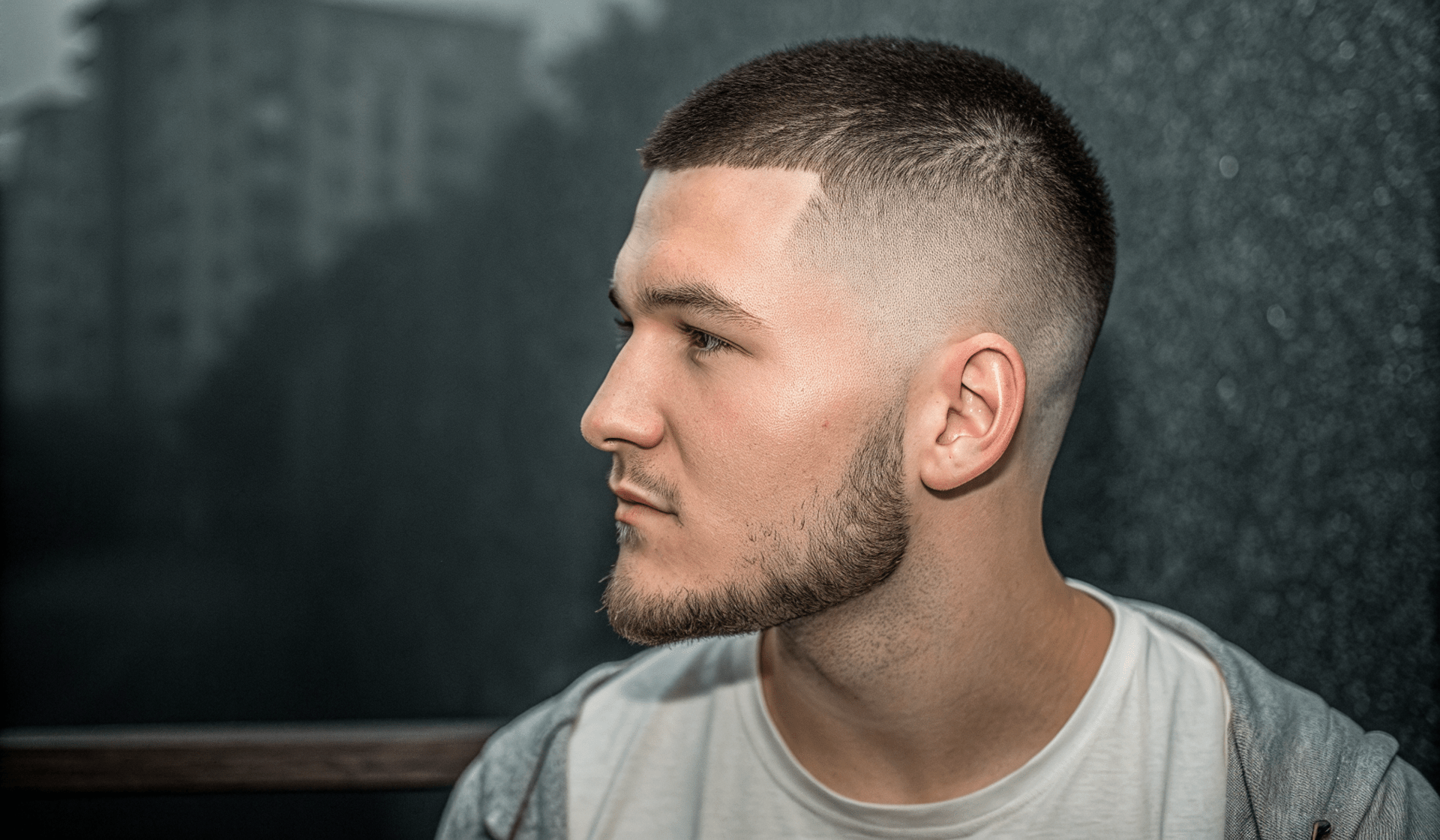
High and Tight: The Ultimate Guide to the Classic Haircut
The high and tight is a classic, low-maintenance haircut that has roots in military tradition but has grown in popularity among civilians for its clean and sharp appearance. Characterized by very s...

Can You Bring Hair Clippers on a Plane? TSA Rules Explained
Traveling with personal grooming tools can be tricky if you’re unsure about airport security rules. One common question among travelers is: can you bring hair clippers on a plane? Whether you’re a ...

